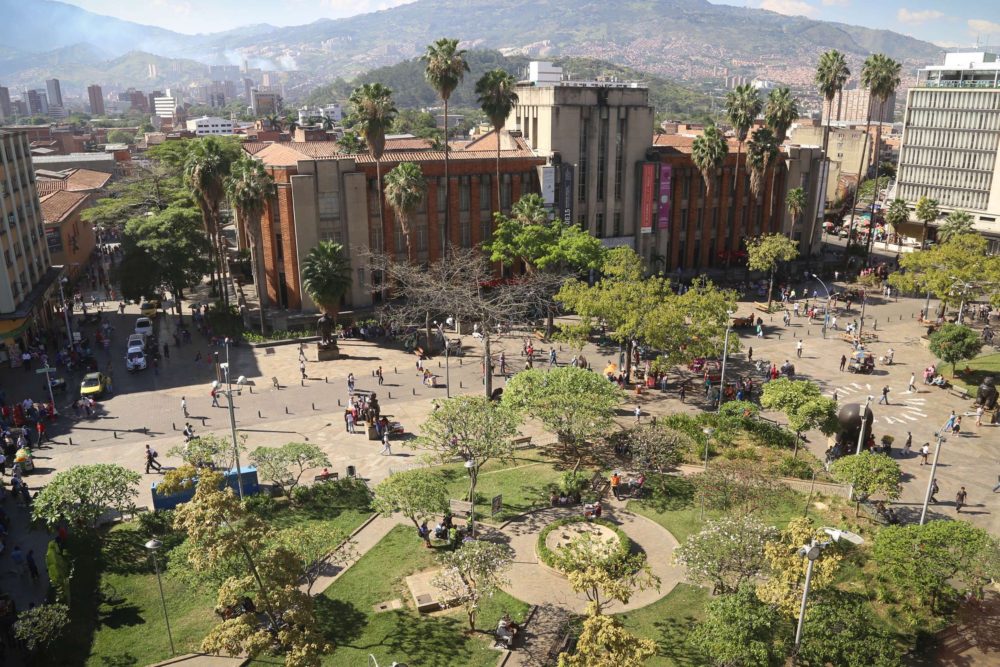
Botero Plaza is a popular spot in Medellin, Colombia. The Museo de Antioquia, center, houses a collection of the artist’s paintings and drawings.
It’s always exciting to discover and new city, and with Medellin, you’re also likely to fall in love. Forget the clichés you might have heard about Colombia’s second largest city – gone are the days of a crime-ridden haven run by drug lords.
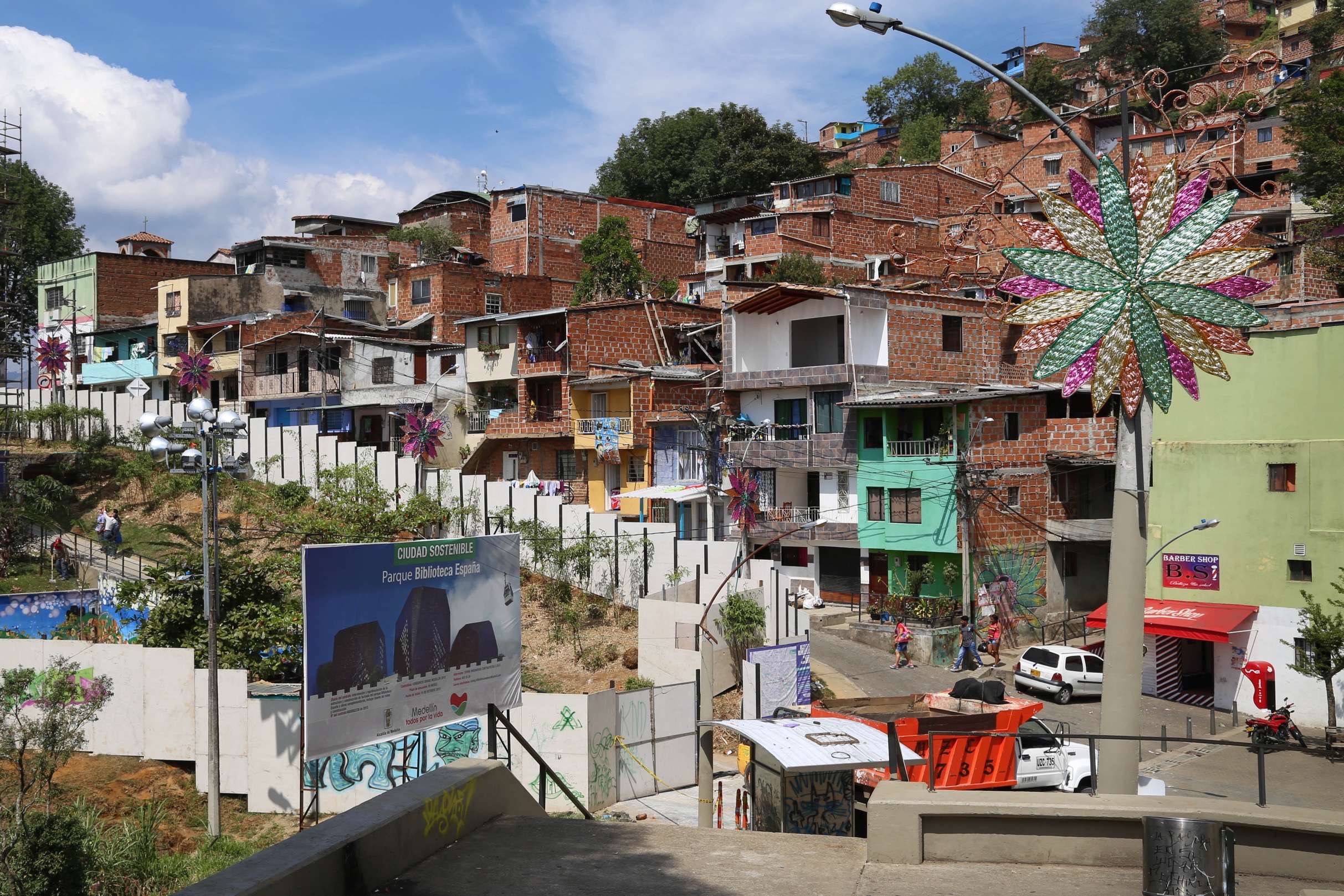
The hillsides of Medellin have become safer thanks to improvements and the extension of a cable car system to connect these areas with the city below.

Medellin is a sprawling city of 2.4 million people.
As recently as the 1990s Medellin was considered the most dangerous city in the world. But as Paisas – those who live in Medellin (population 2.4 million) and the surrounding area – are quick to point out, dark days are giving way to a modern metropolis where tourists are welcome. As recent visitor I felt safe in Medellin. (Tip: Colombians pronounce the city’s name as med-uh-JEEN.)

Upwards of 500,000 people each day take advantage of Medellin’s light rail transit and cable car system.
Just getting around is an example of better times. Medellin is proud to have Colombia’s only light rail system and likely the cleanest I have ever ridden. Station floors are spotless, no graffiti tagging is on the walls or cars, and the city’s residents do not tolerate breaches of protocol – eating food and playing loud music are frowned upon. Foreigners are watched over protectively, and don’t be surprised if it’s suggested to zip your backpack closed, or a pair of sunglasses hanging off the back of a shirt collar might be stolen.
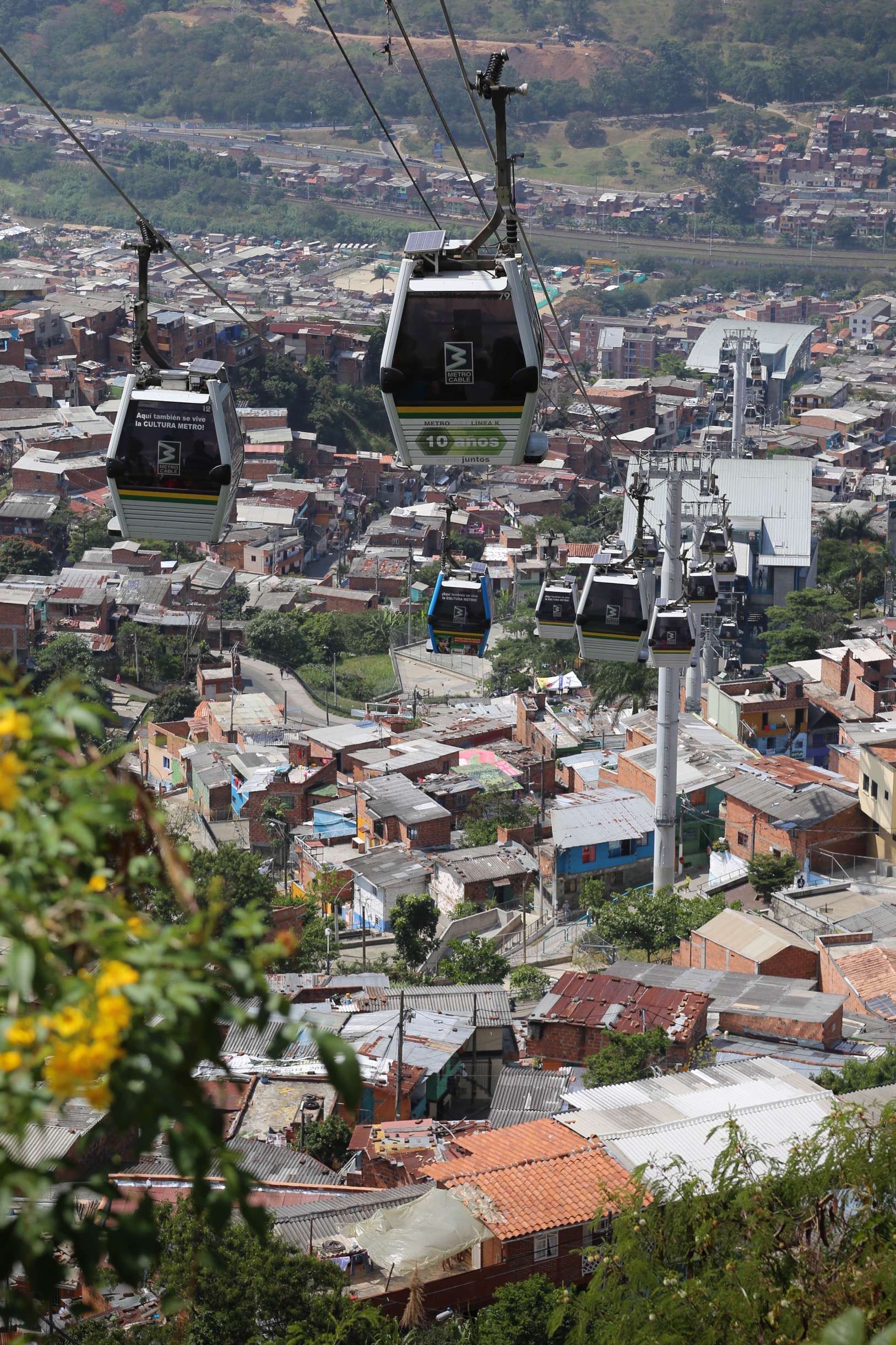
Cable cars connecting hillside enclaves with the main city, improve the lives of many Paisans.
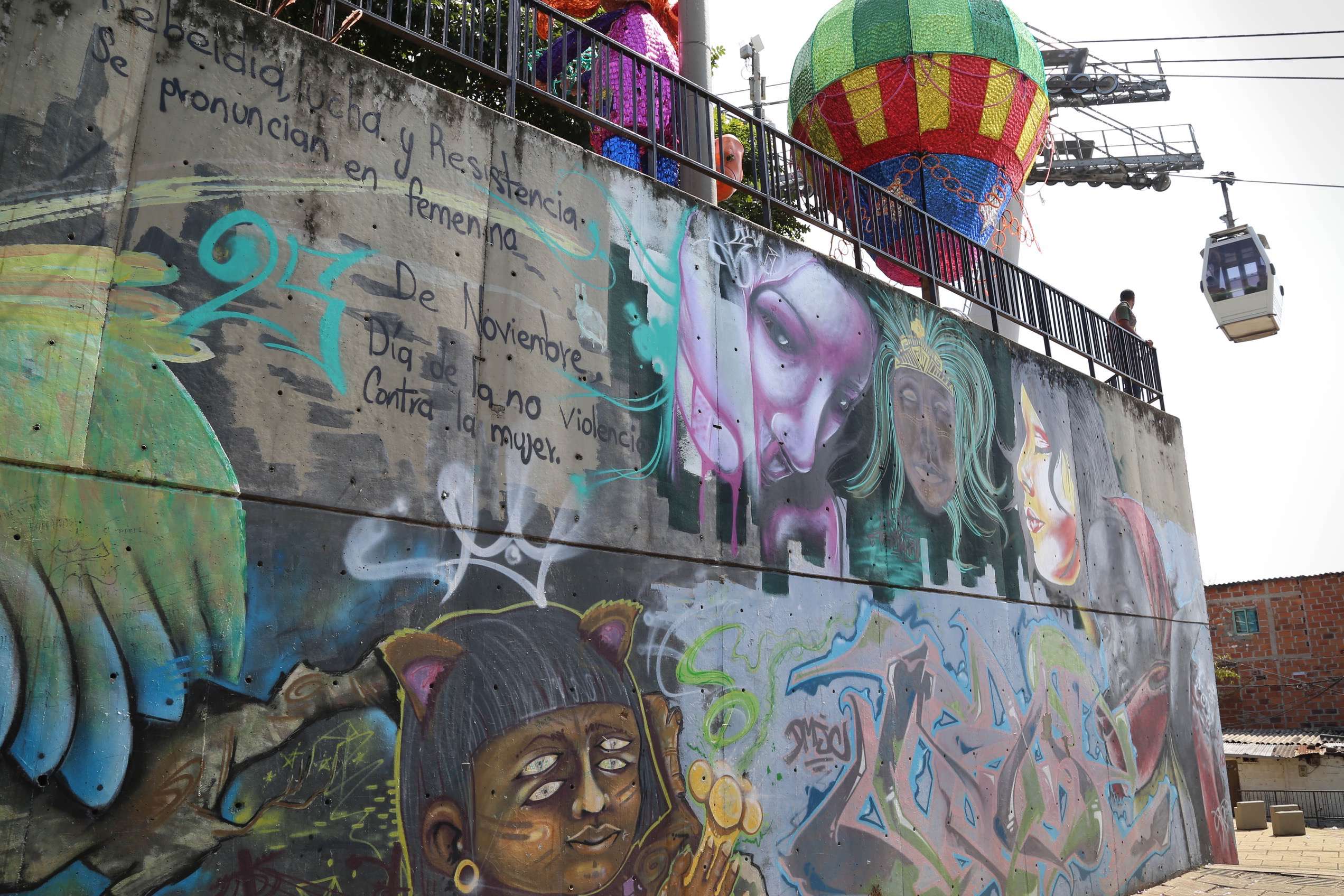
Political and social beliefs are expressed on a wall at one of Medellin’s hillside areas as a Metrocable car moves along.
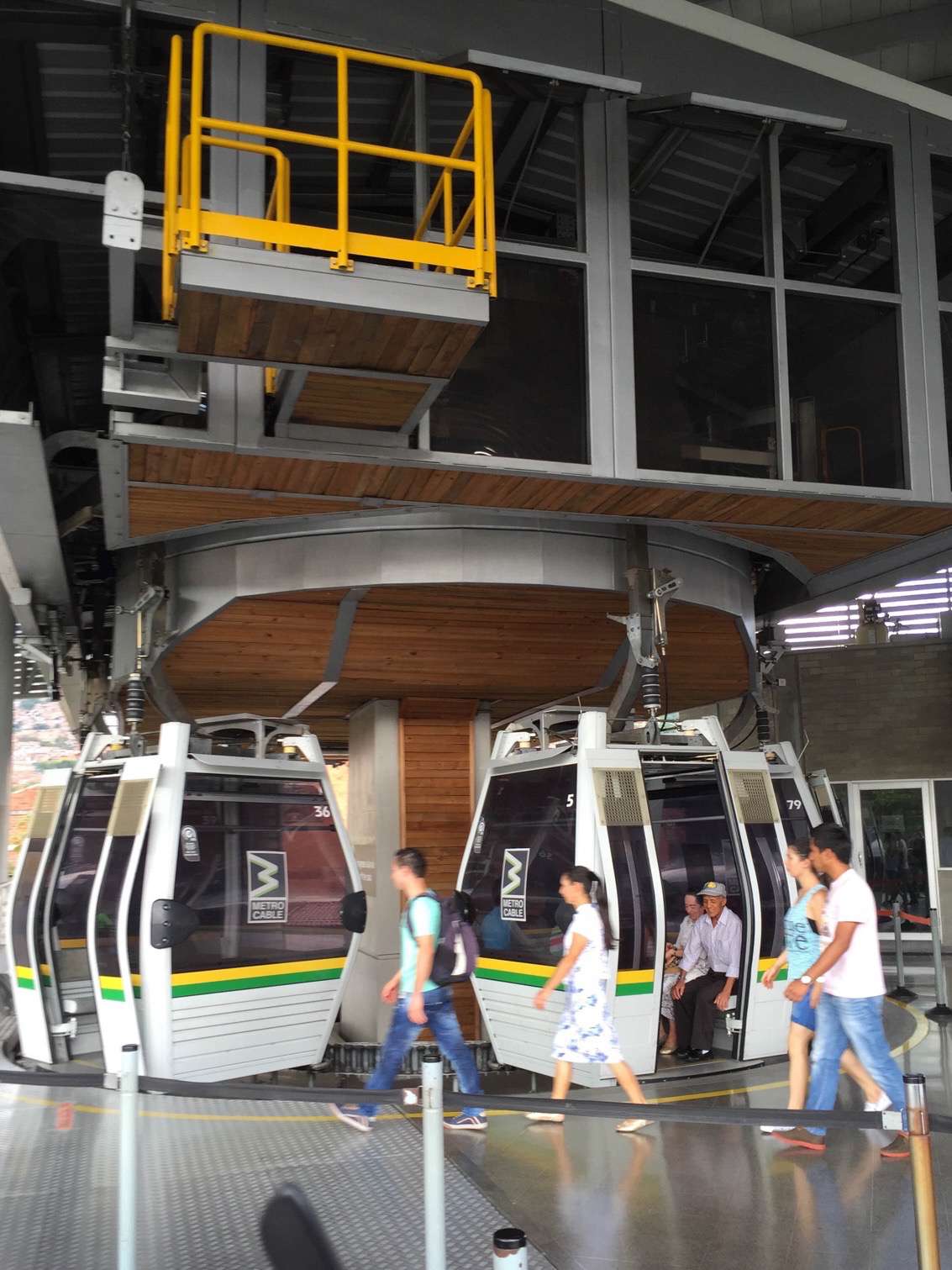
Metrocable cars do not stop, so passengers must use care when getting on and off the cars, like this group of four preparing to board.
Medellin’s light rail system also addresses problems of crime, isolation and employment. When the subway was built, beginning in 1984 and completed in 1995, hillside enclaves were generally poorer, lawless, and had higher rates of unemployment – all chronic problems. The cable car system that spurs off from the main light rail lines provide an affordable and time saving way to get to the main parts of the city, where better jobs and schools are located. Areas of Medellin that were once trouble spots are now neighborhoods where families can live in peace.

A squad of Medellin’s motorcycle police officers working in one of the city’s hillside neighborhoods pose for a photo.

Medellin is crowded and energetic. This is in one of the shopping districts in the main part of the city.

Motorcycles and scooters are affordable, a popular way to get around and weave in and out of traffic in Medellin.

Plaza Cisneros in downtown Medellin used to be a problem area, but is now a popular gathering spot.

Iglesia de la Veracruz is Medellin’s oldest church. The story is men would go in for confession, then exit to the side street and procure a prostitute.
The parks and the botanical garden in Medellin are beautiful and well worth a visit. The largest metropolitan park in Colombia, Parque Arvi, sprawls over more than 39,000 acres on the upper hillsides northeast of the city. There are lots of trails to hike, a waterfall and lake, among other attractions to enjoy. Take the Metrocable Link L to get there (yes, you can drive in). Park admission is free. The park’s higher elevation offers cooler temperatures in the summer.
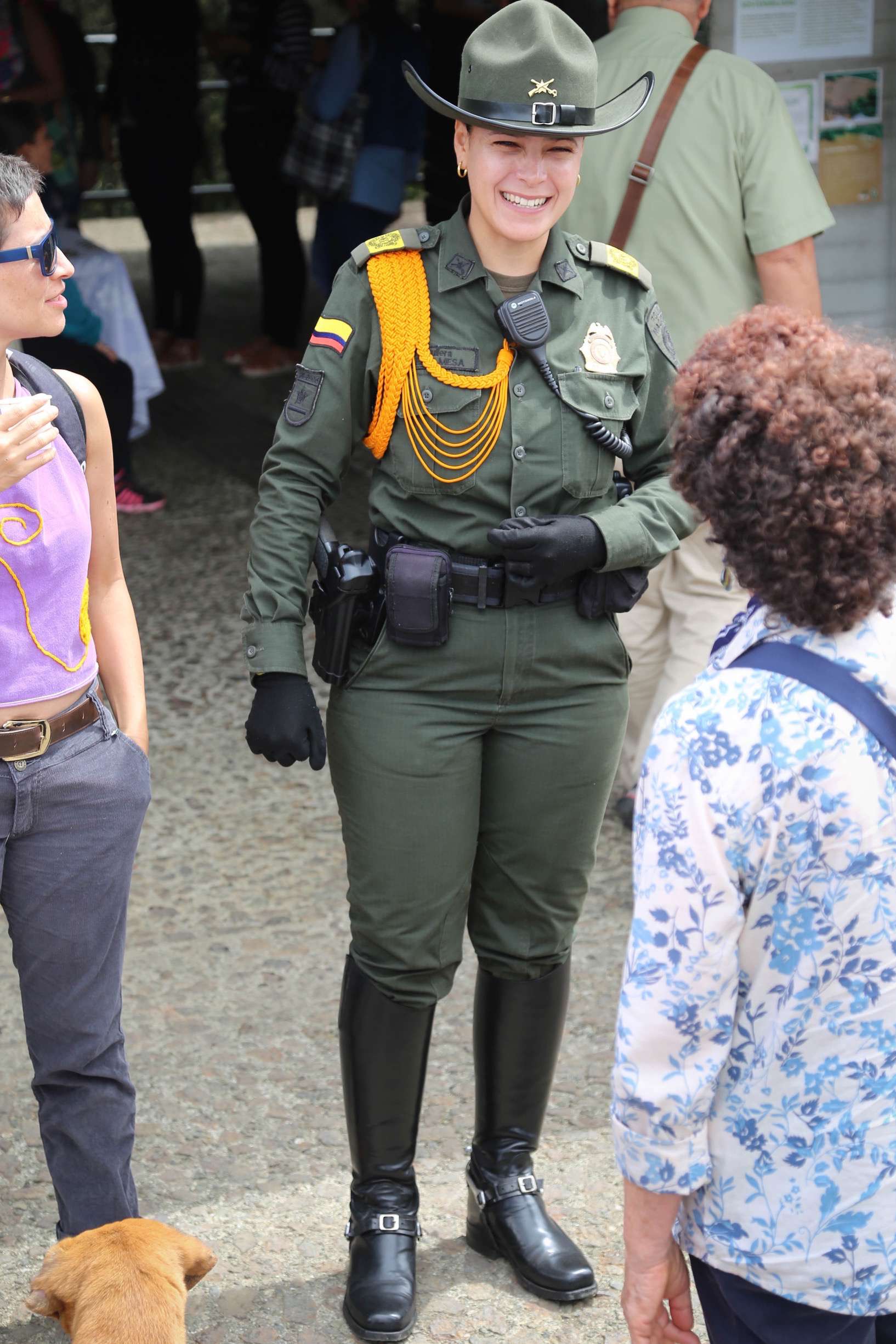
A ranger at Parque Arvi enjoys telling visitors about the attractions at Medellin’s largest park.

A pair of women chat on a bench at Parque Arvi in Medellin as Metrocable cars ferry visitors in and out.
Parque Bolivar (named after Simon Bolivar; the reason Colombia is a nation and not a colony) is hugely popular. Featuring a giant statue of Bolivar, the park is vibrant and filled with residents and visitors day and night. But beware the park can be a bit sketchy at night.

Jardin Botanico is another Medellin prize where families take advantage of free admission and the serene setting.
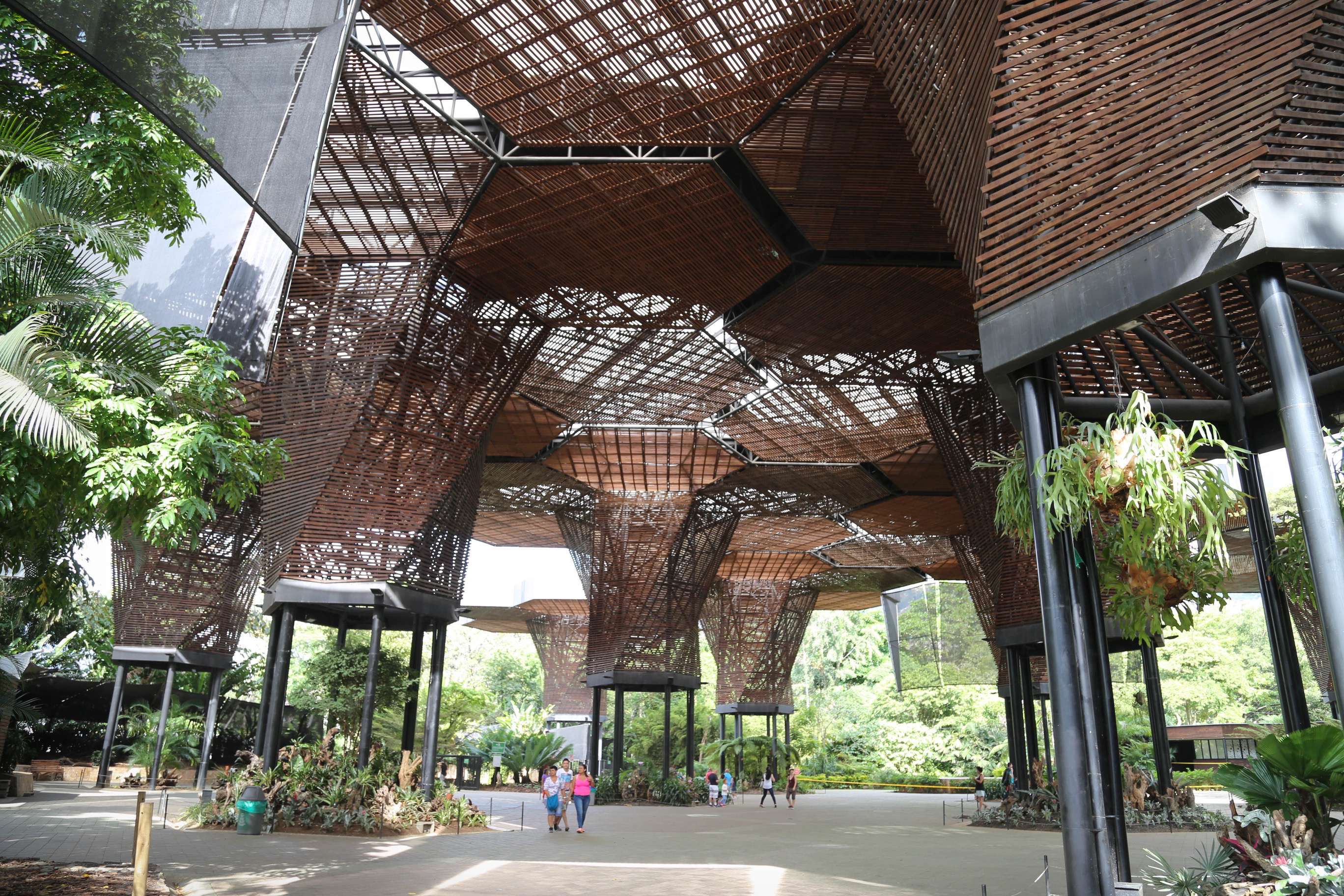
This fanciful structure protects the orchid collection at Jardin Botanico from the burning sun in Medellin.
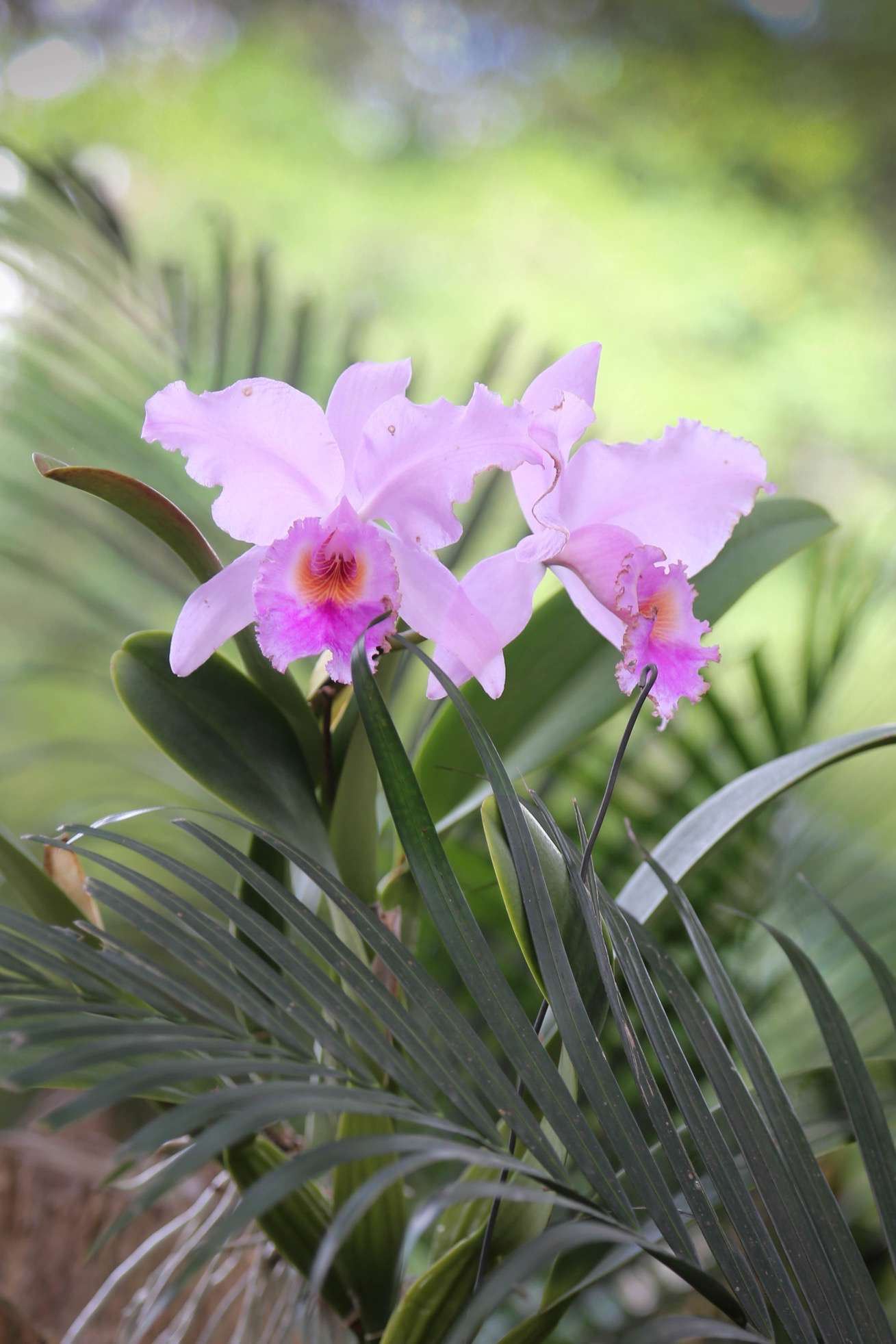
A gorgeous collection of orchids is on display at Jardin Botanico.
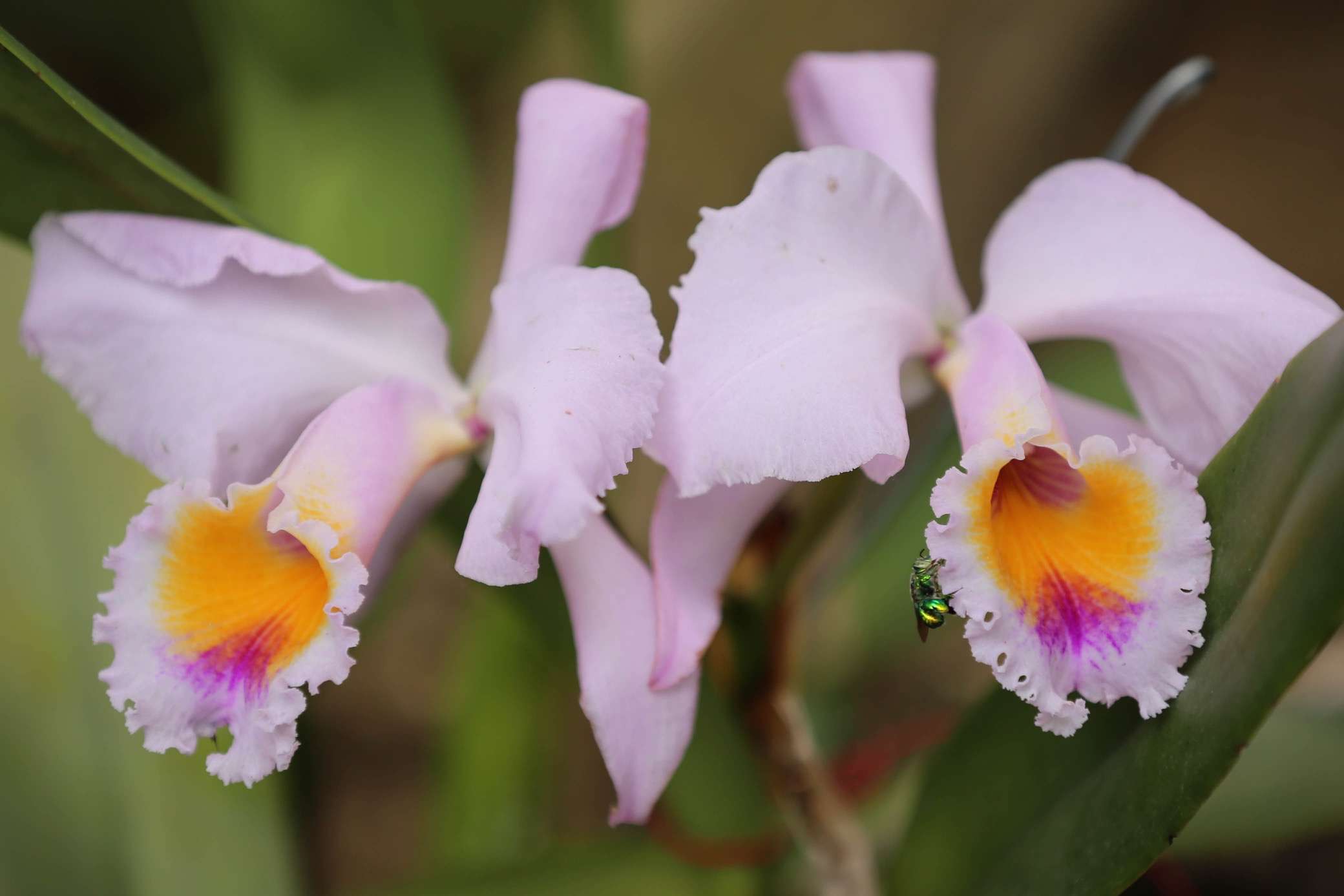
A green fly, on the right orchid, looks for something to eat at Jardin Botanico.
Jardin Botanico is another Medellin gem, located just off one of the Line A subway near the University Station. Free admission with lots of excellent spots to enjoy the diversity of Colombia’s flora, including a marvelous butterfly house, orchid garden and a library filled with oversized botanical books.

Visitors young and old line up to spend a few minutes in the butterfly house at Jardin Botanico in Medellin.

The butterfly house at Jardin Botanico in Medellin is a popular attraction.
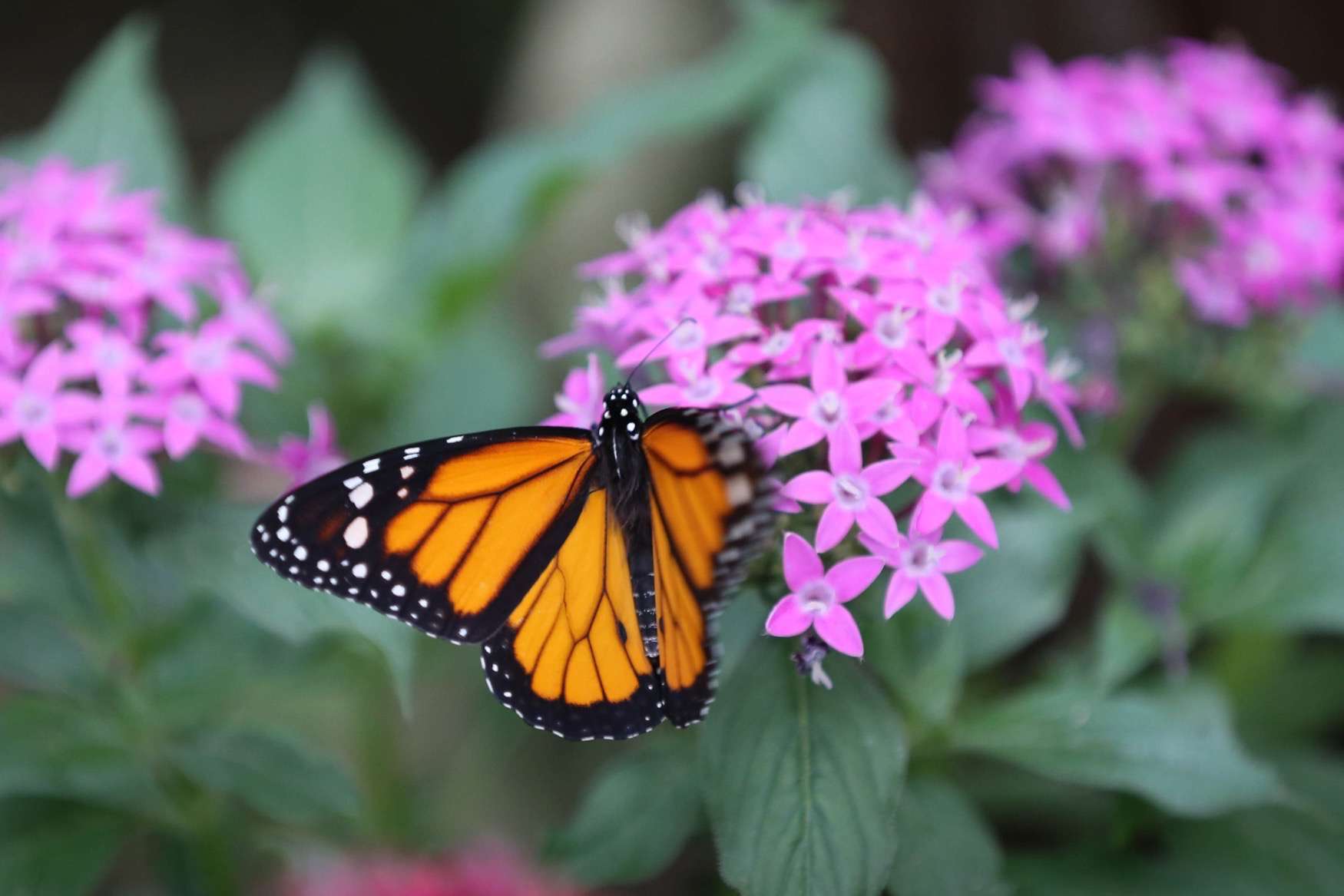
A species of Monarch Butterfly sips nectar from a flower at the butterfly house.

Butterflies of all shapes, sizes and colors can be found in the butterfly house at Jardin Botanico in Medellin.
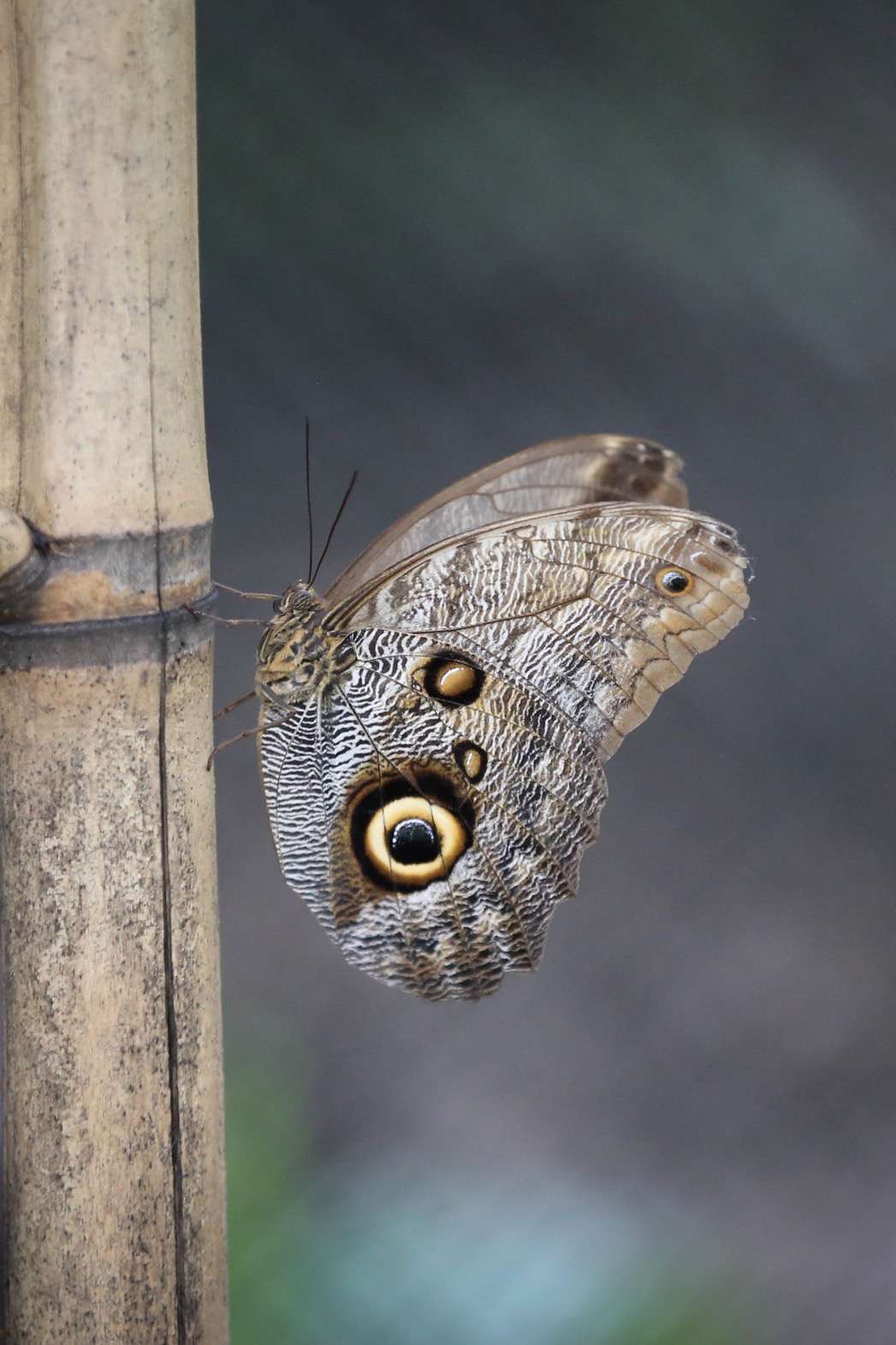
The large circle on the Owl Butterfly wings looks like the eye of an owl and is an excellent example of adapting camouflage as a survival mechanism.

Bibliophiles have plenty to pore over at Jardin Botanico’s folio-sized botanical book collection.
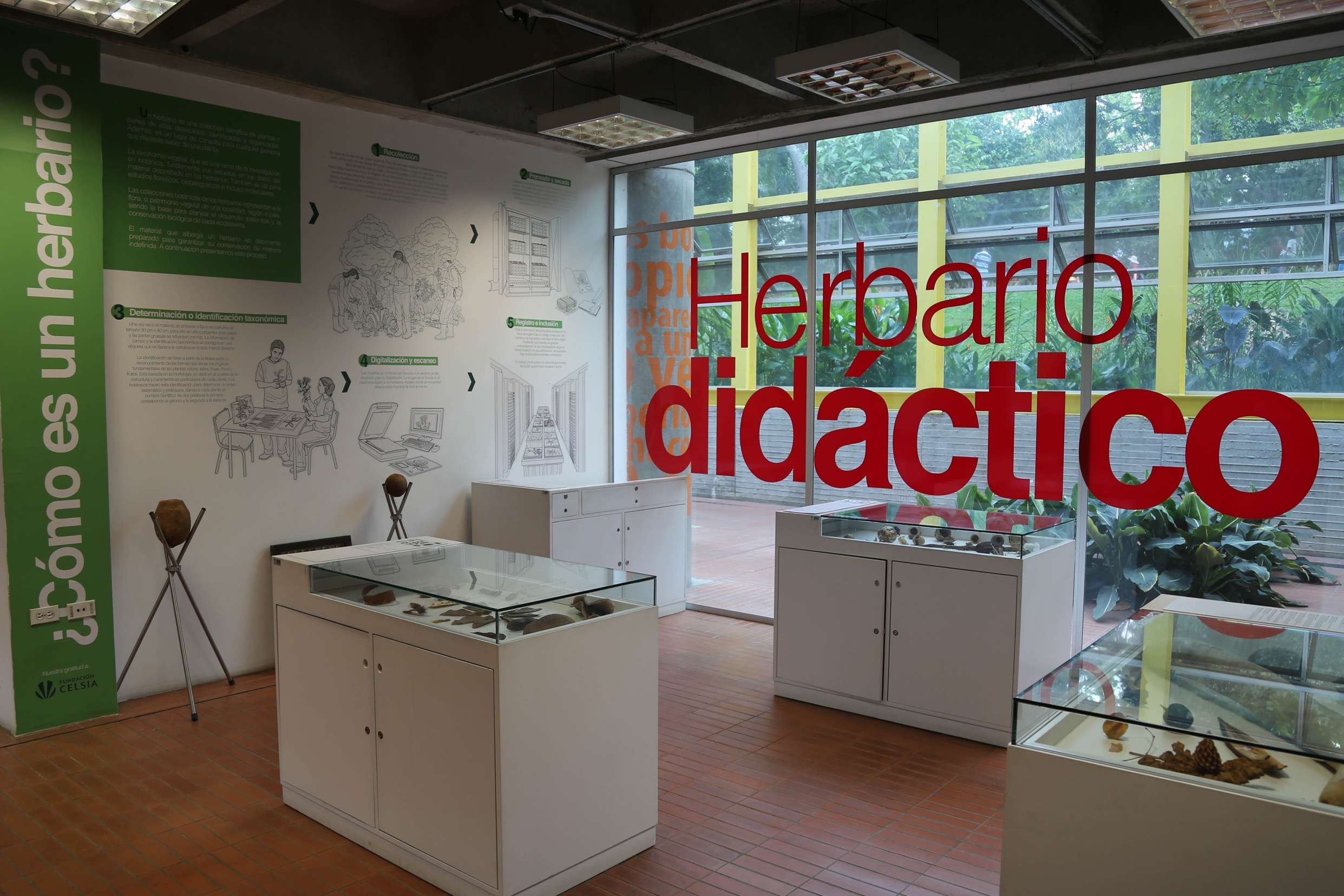
Jardin Botanico’s research building houses some excellent information of the flora and fauna of the area.
And Parque Explora, next to the botanical garden, is an interactive museum of science and technology that will delight children and also keep adults engaged for hours. It includes a planetarium, aquarium and vivarium, in addition to spatial and mental challenges to fascinate visitors.
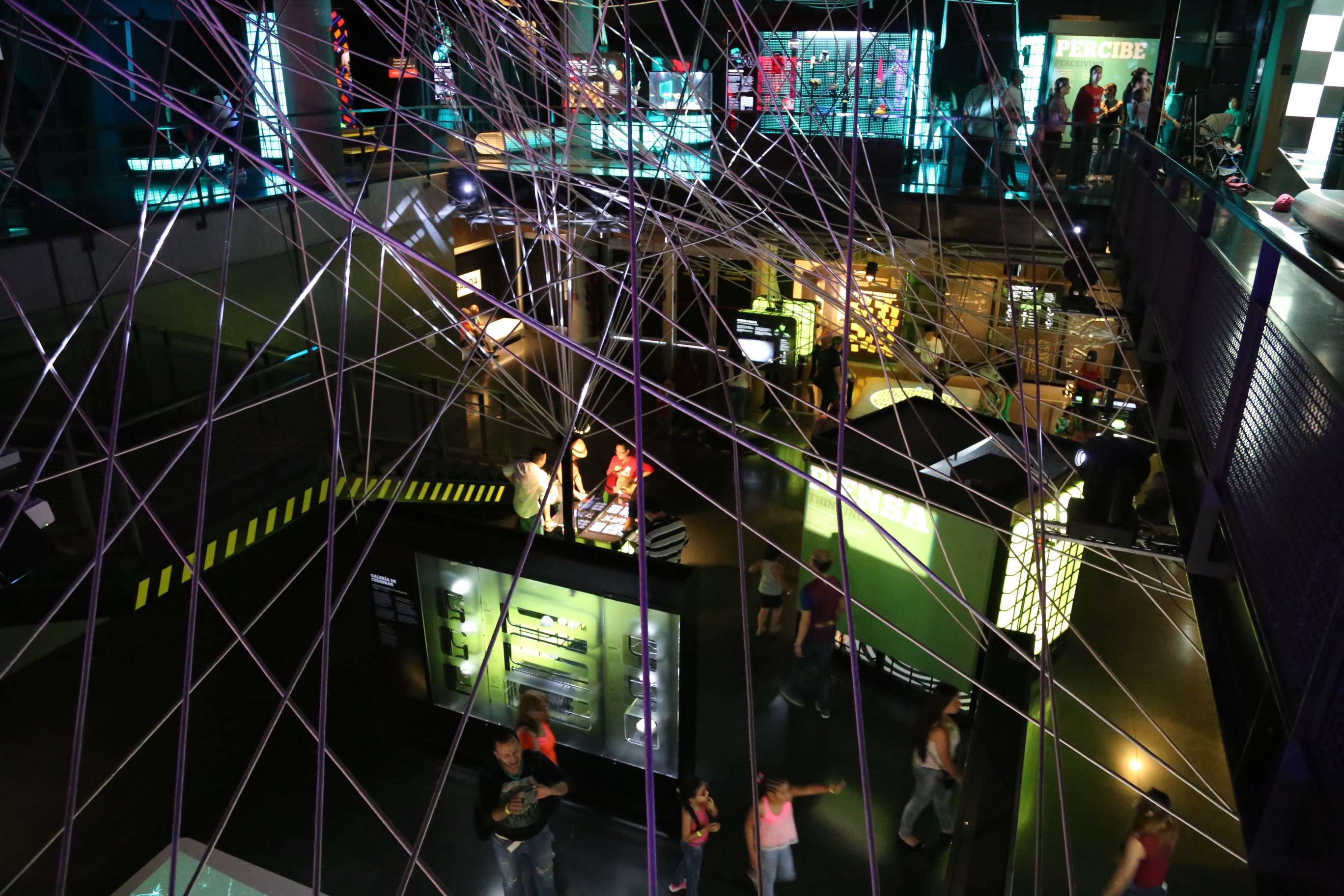
Parque Explora offers a fascinating array of mental and optical challenges in interactive spaces.

The docent, center, points to a fish above her head when a small boy and his mother visited Parque Explora in Medellin.

A father and his baby marvel at fish in one of the many tanks at Medellin’s Parque Explora.
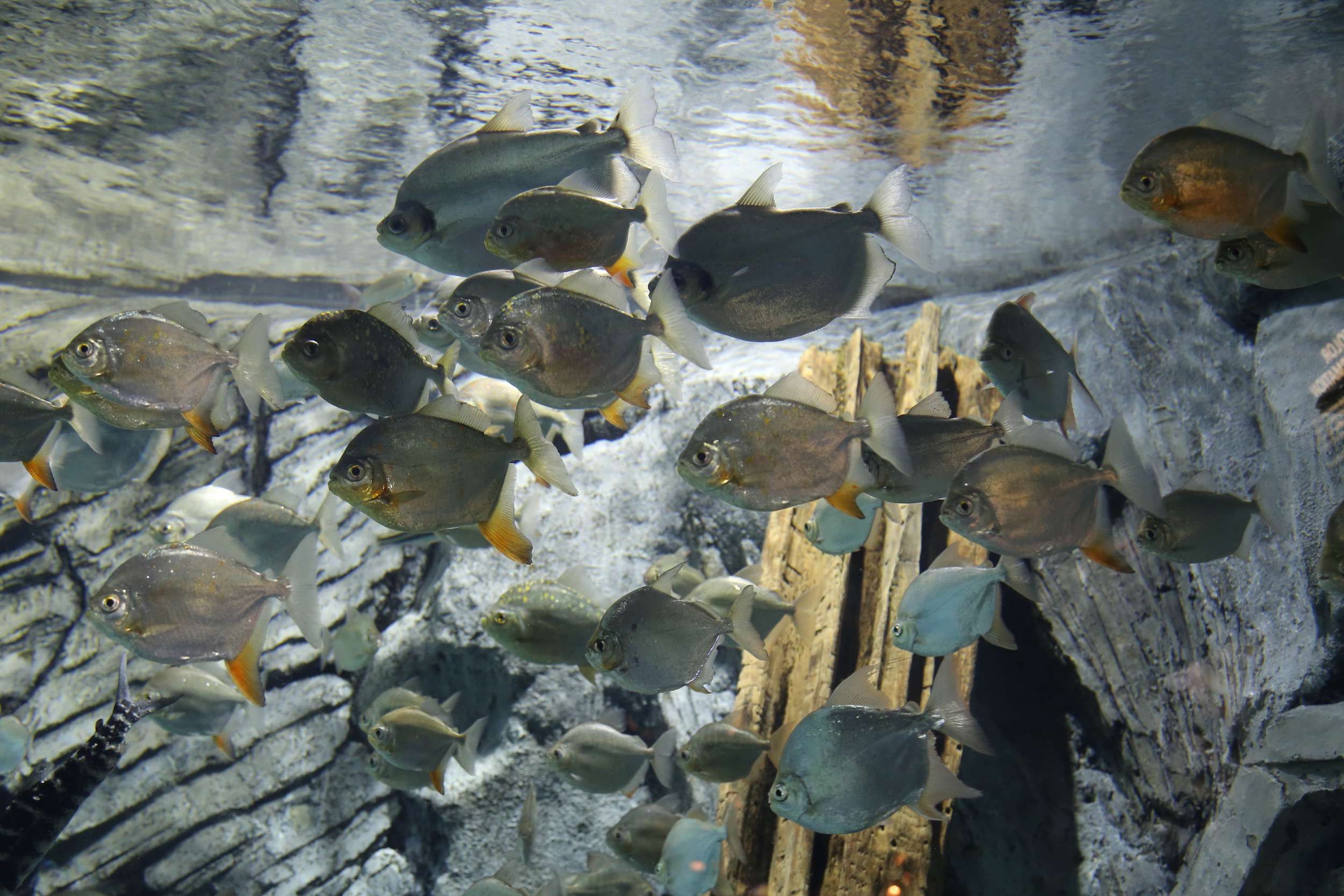
Colombia and South America are home to many varieties of fish, like these at Parque Explora Aquarium.
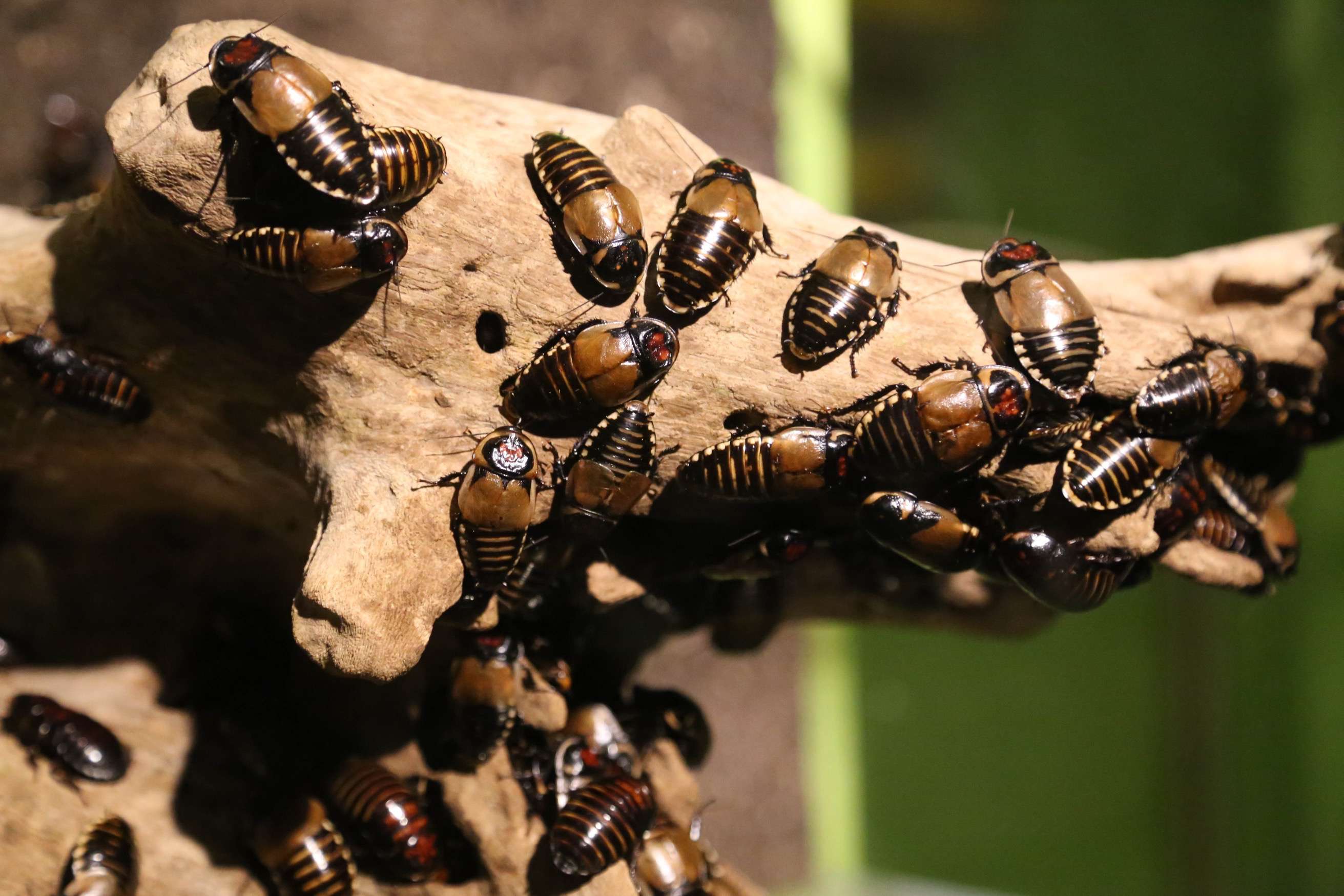
It seems young boys thought the giant bugs in this terrarium at Parque Explora were interesting but young girls didn’t much care for them.
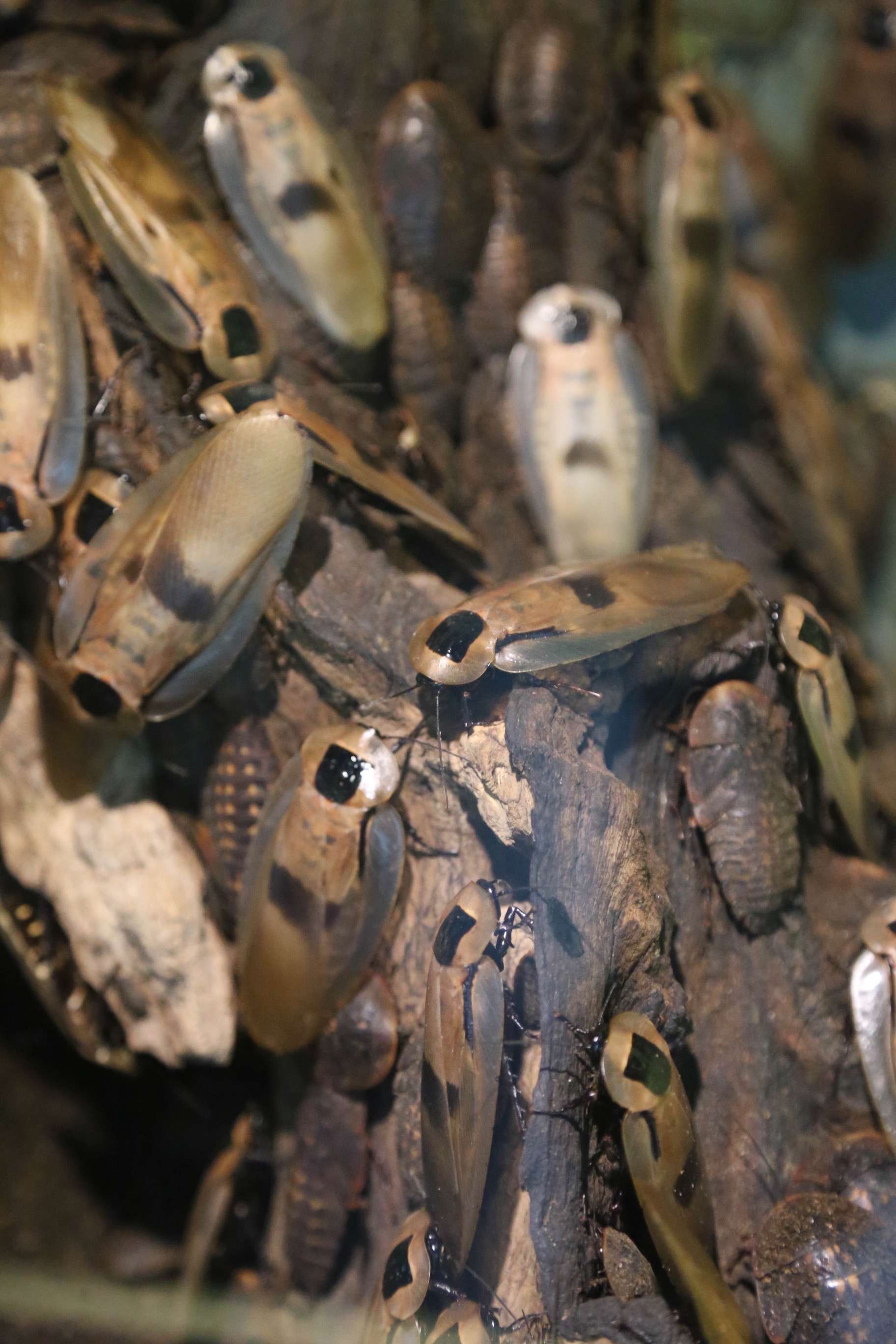
Only true bug lovers could appreciate these creepy crawlers, on display in the Vivarium at Parque Explora.
Another of Medellin’s famous attractions is the unique art of Fernando Botero, who proclaimed himself, “the most Colombian of Colombian artists.” Since the late 1940s Botero (born in 1932), has produced an impressive body of work including drawings, paintings and sculptures. Botero’s signature style is exaggerated proportion, both over-sized as well as undersized portions – plump, ample men and zaftig women. The whimsy of the work belies Botero’s genius. The Museo de Antioquioa, located in the Old Quarter of the city has an outstanding collection of Botero’s paintings. And Botero Plaza, in front of the Museo, holds a breathtaking collection of nearly two-dozen of Botero’s brilliant sculptures the artist generously donated to his beloved city. Additionally, there are four other Botero sculptures nearby in Medellín’s Berrio Park and San Antonio Plaza, including one damaged by terrorists. The damaged statute remains, but an exact copy has been placed next to it. to serve as a reminder of the difficulties in Colombia’s political past.

Fernando Botero gives his sculptures simple names, like “Man on a Horse” on display in Medellin, Colombia.

“Roman Warrior” by Fernando Botero stands guard at Botero Plaza in Medellin.

Botero Plaza is home to nearly two dozen Botero sculptures and is a very popular place for Medellin’s residents and visitors.

Fernando Botero’s “Bird of Peace” was blown apart by a terrorist and 12 people were killed in 1995 at Parque San Antonio in Medellin, Colombia. Botero donated another copy of the sculpture and it was installed next to the damaged one, serving as a reminder.
Colombia, like most countries in South America, produces a cornucopia of fruits, vegetables and seafood. To get a better appreciation of the country’s diversity, take an exotic tour of Plaza Minorista. Guides expert in the foods of Colombia lead visitors through the maze of bustling stalls, stopping along the way so you can enjoy samples of exotic fruits that give you a whole new appreciation for the diverse foods of Colombia.
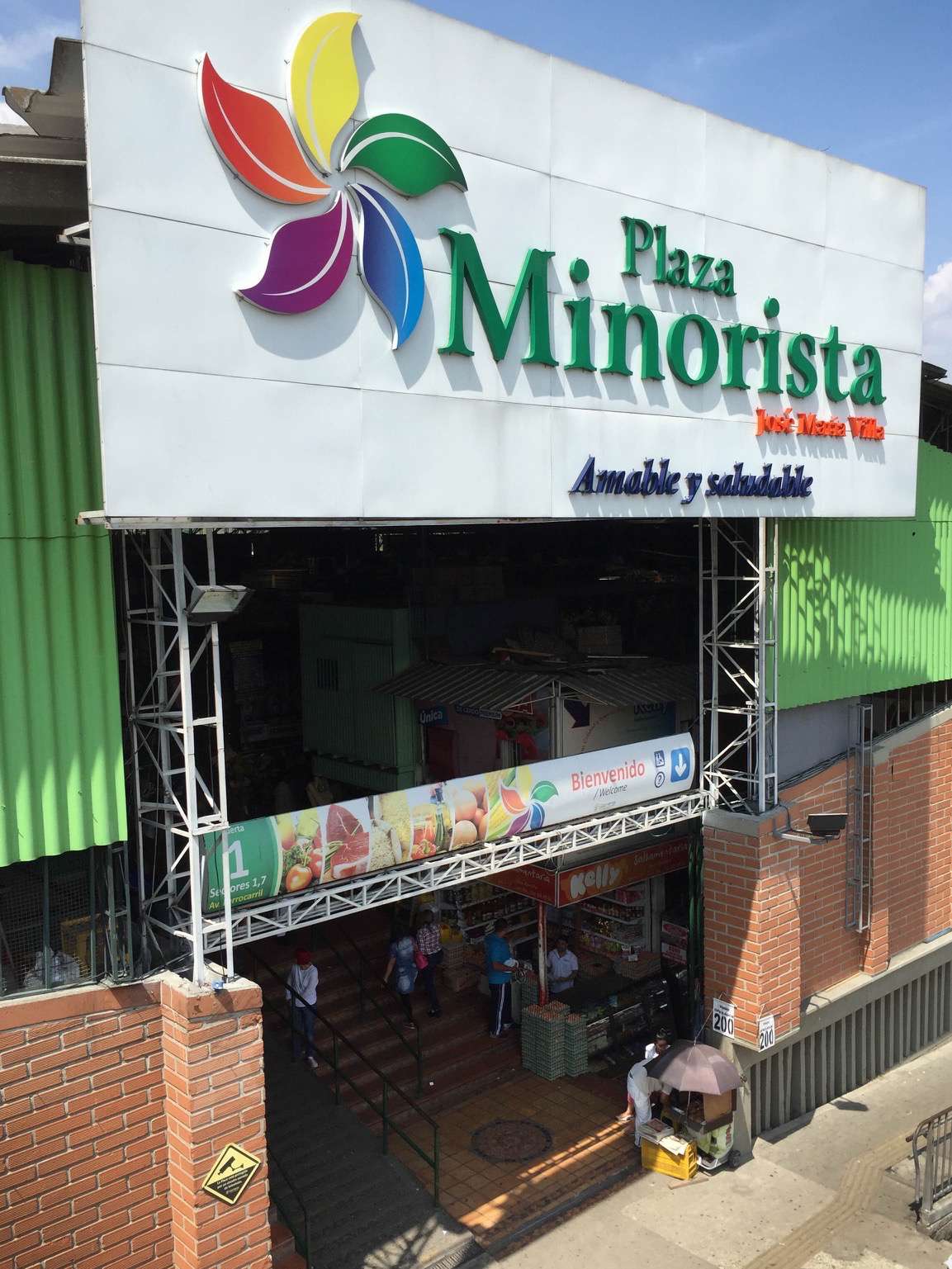
To learn about the incredible variety of fruits and vegetables found in Colombia, a visit to Plaza Minorista is in order.
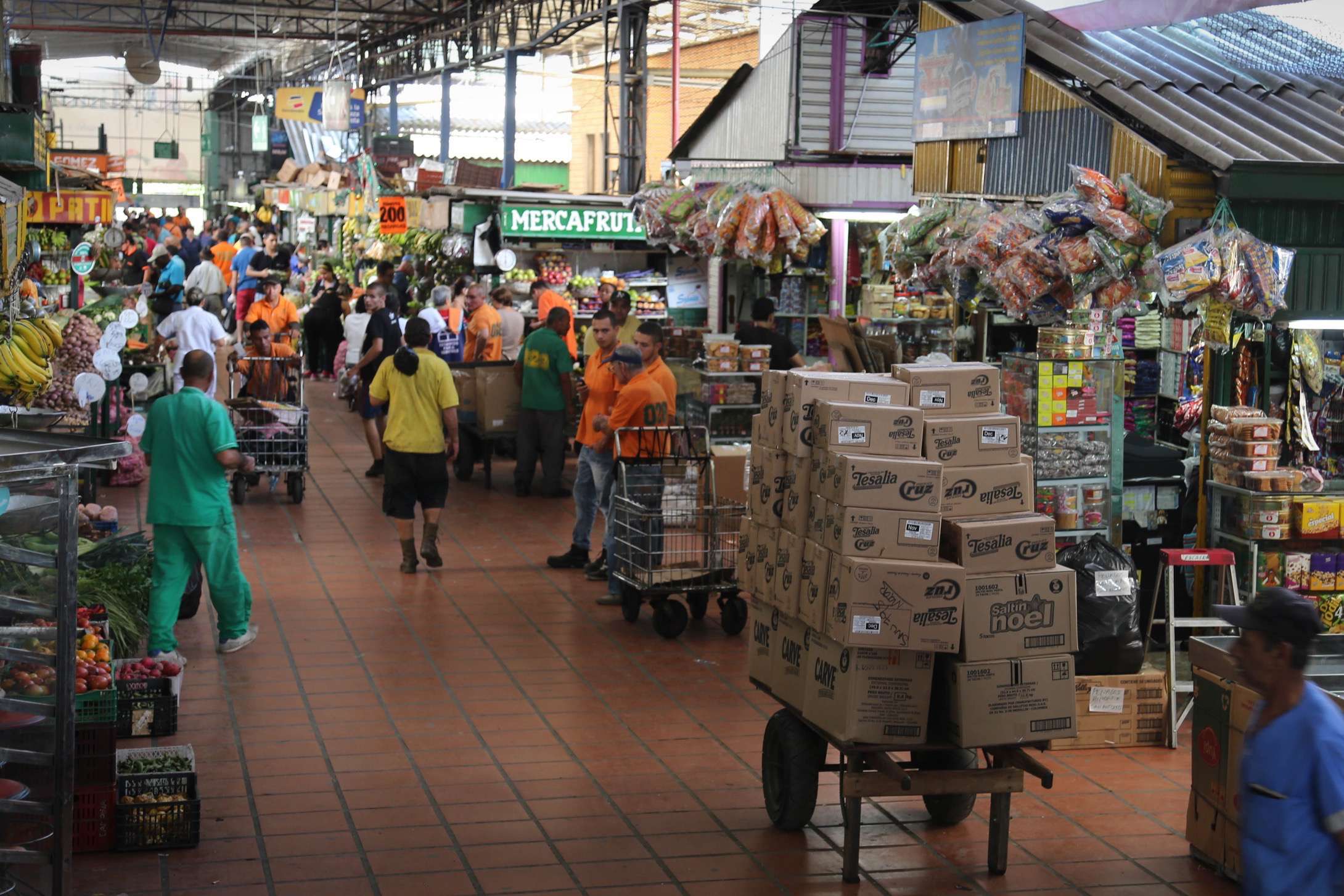
The number of stalls and vendors selling fruits, vegetables, seafood and meat is seemingly endless at Plaza Minorista.

Plaza Minorista is a bustle of activity and here a worker grinds down a piece of metal as others go about their business.

A mother and her son smile during their work at a food stall at Plaza Minorista.

Guides with extensive knowledge of Colombia’s fruits and vegetables know which of the tastiest samples to offer.
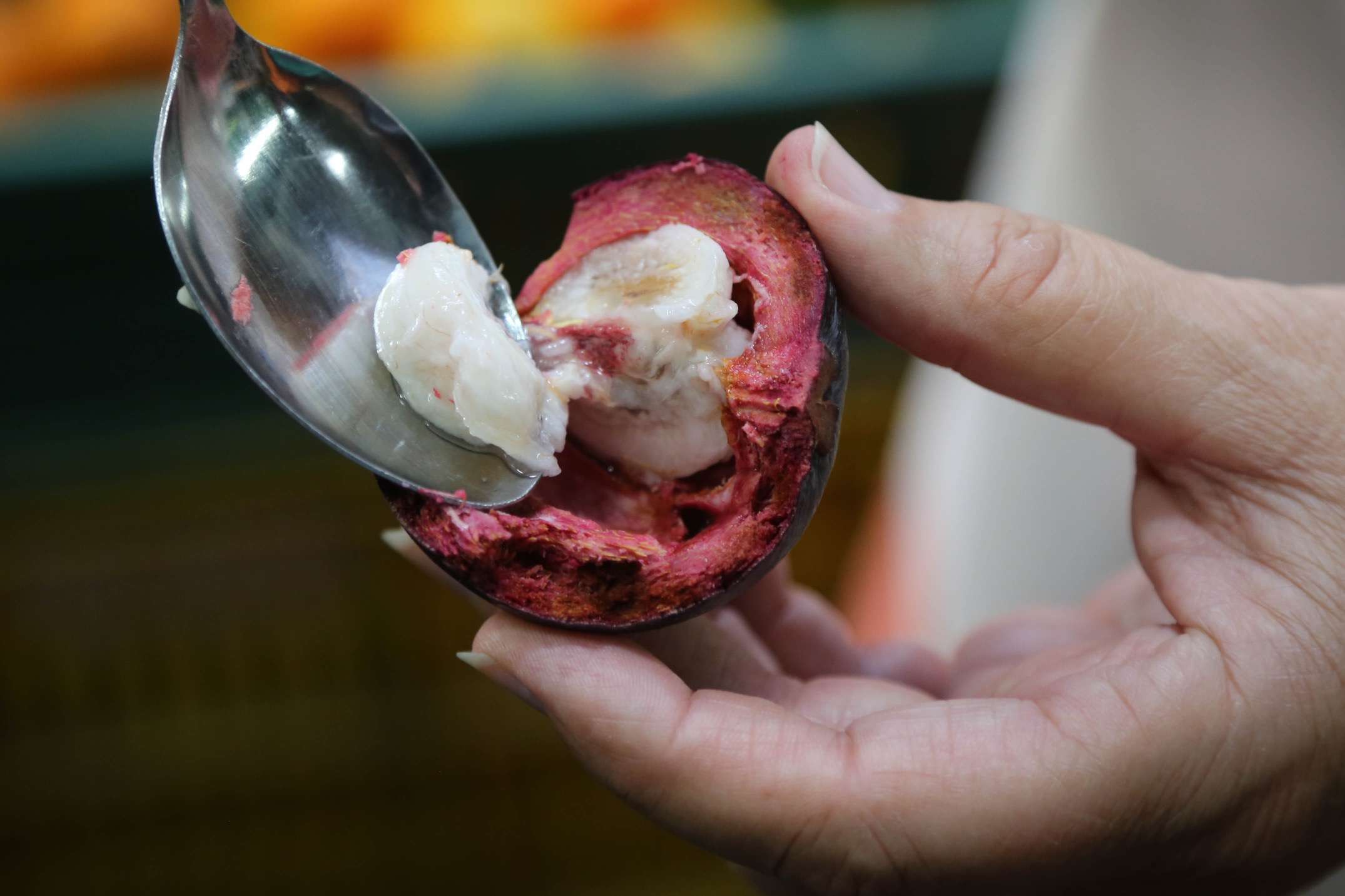
This is a Mangosteen and the white portion in the center is a combination of tangy and sweet.
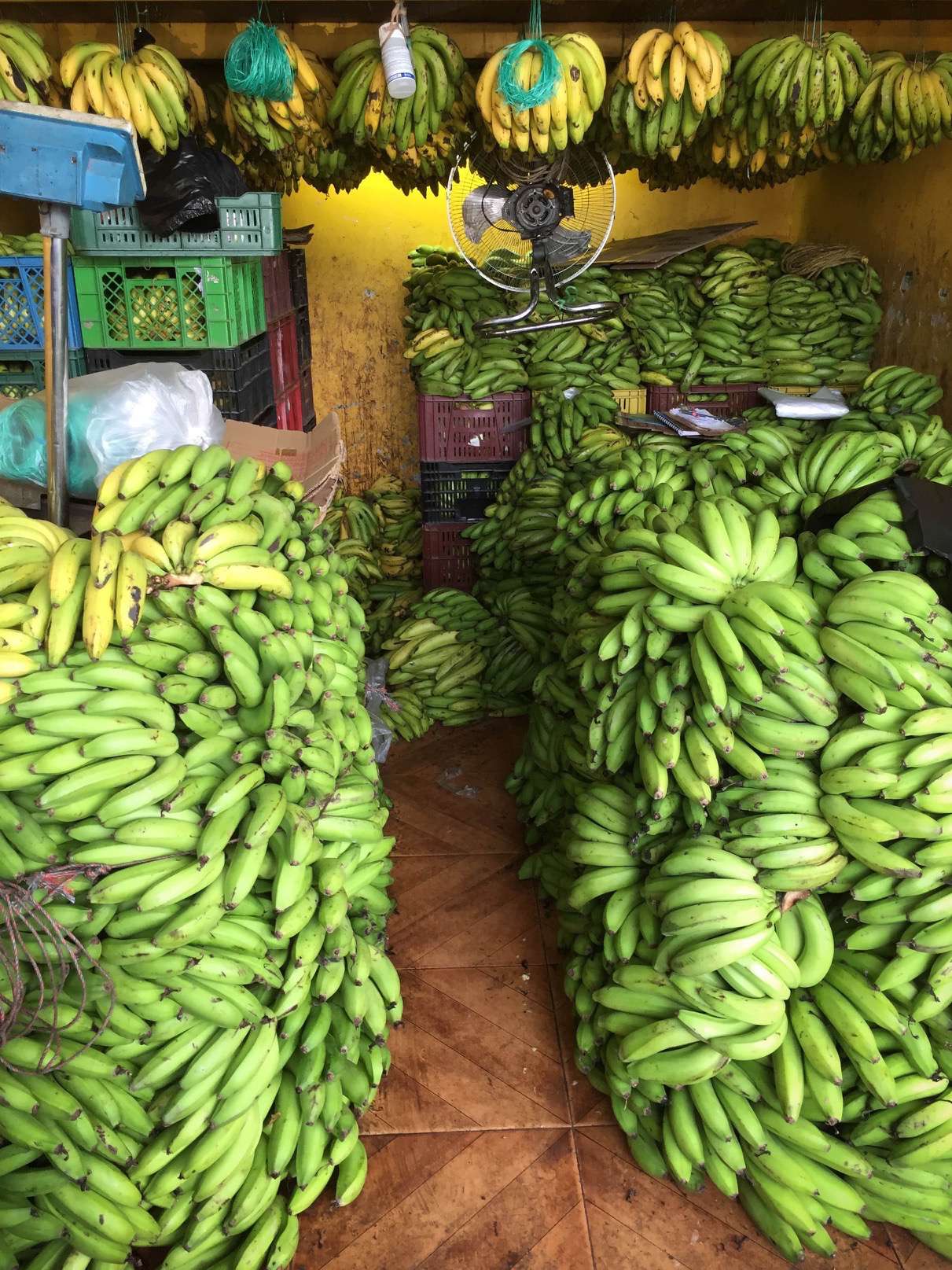
Yes, they have bananas, and they have them every day at Plaza Minorista.
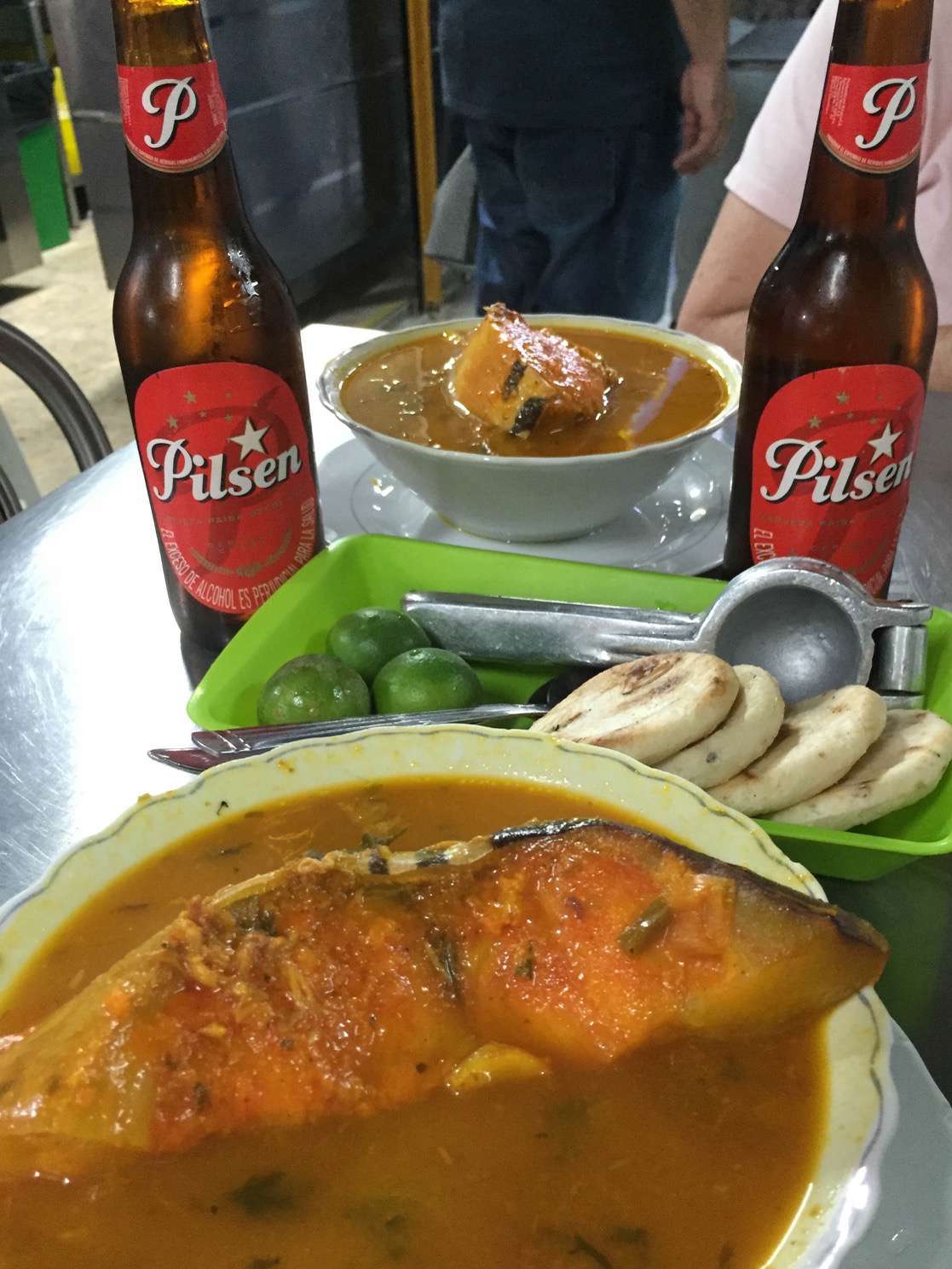
Plaza Minorista has some excellent restaurants where you can get fresh fish stew and a cold beer for just a few dollars.

A worker at Plaza Minorista multitasks as he sharpens his knife while smoking a cigarette.
In an ever-changing world, Medellin is a city moving in a positive direction, and for travelers looking for something new, something exciting, and a spot they will always be fond of, Medellin is a great choice.
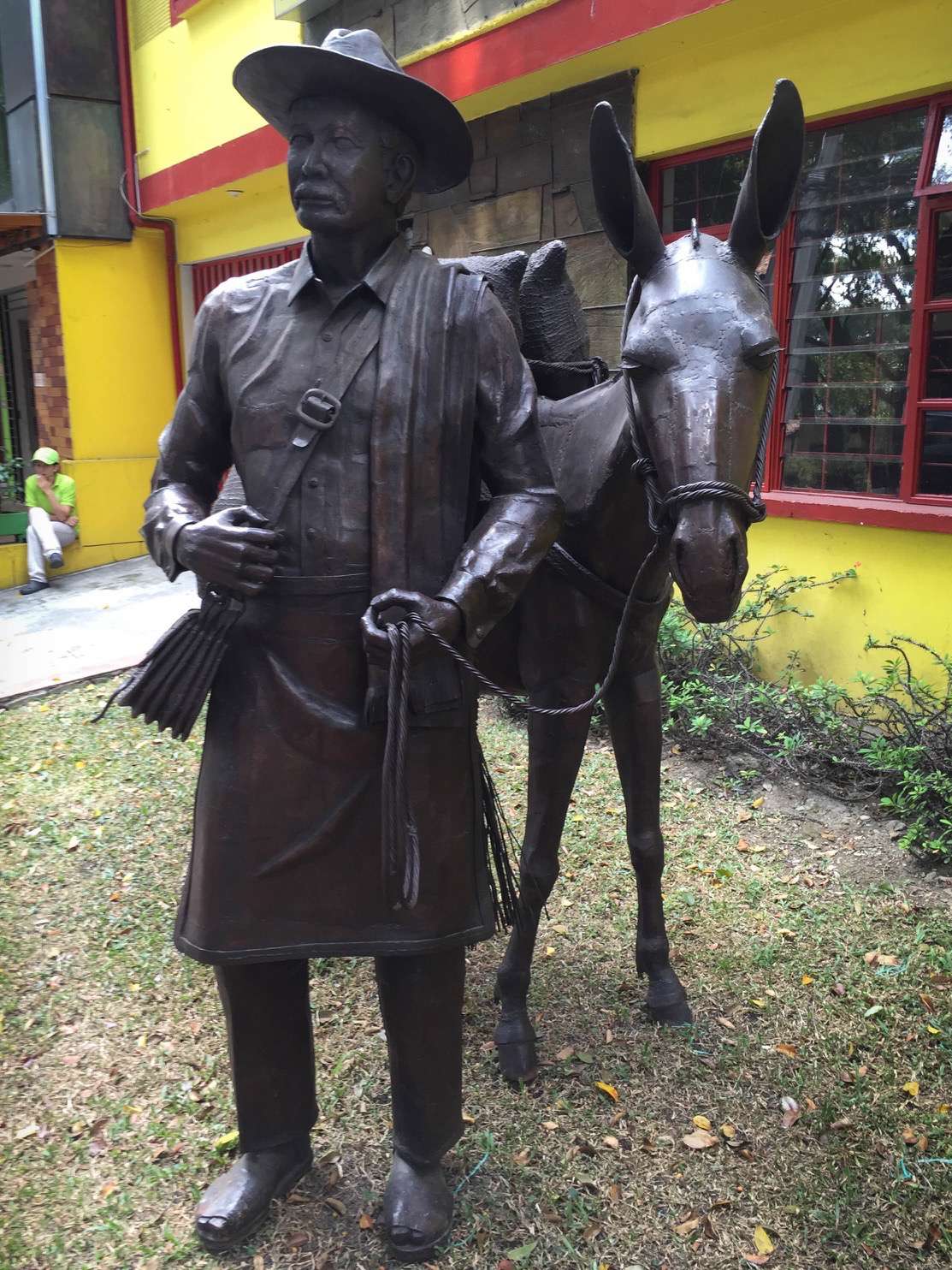
Is this the famous Juan Valdez of Colombian coffee fame?
For more information about Medellin and ways to see the city, click on these websites:
